VISCERA// Digital Hell Studio
Richmond, VA
May-August 2022
An installation consisting of four rooms; the Grow Room containing plastic totes, BPA spinach and lettuce containers, and soil disturbed by local construction. A quilt made of grocery bags fills another room like a sky. Mirrored puddles and bubble wrap clouds imitate a post-storm view.
GROW ROOM
Plastic totes, BPA spinach and lettuce containers, soil disturbed by local construction.
BLUE SKY SIMULATION ROOM
Plastic grocery bags from Food Lion, mint flavored chewing gum, oscillating fan.
WALKTHROUGH VIDEO


RAIN SIMULATION ROOM
Bubblewrap, Poly twine, Mirror.
CLOUDWATCHING
Plexiglass, dry erase marker, 3:44 video, plastic box, styrofoam, brass hardware.
Public engagement piece in which participants traced the clouds visible from the Food Lion parking lot at 1228 Concord Ave, Richmond, VA 23227.Each person traced the outlines in a different color while engaging in coversation with the artist. The plexiglass was then attatched to the wall, including the tracings from the parking lot, and projected onto. The video projection superimposes other cloudscapes onto these outlines.
Video sites include non-descript but open locations such as parking lots and highways, where moments of awe occur in the supermodern non-place. (see thesis)
OBSOLESCENE // The Anderson Gallery
Richmond, VA
January-Feburary 2022
press release
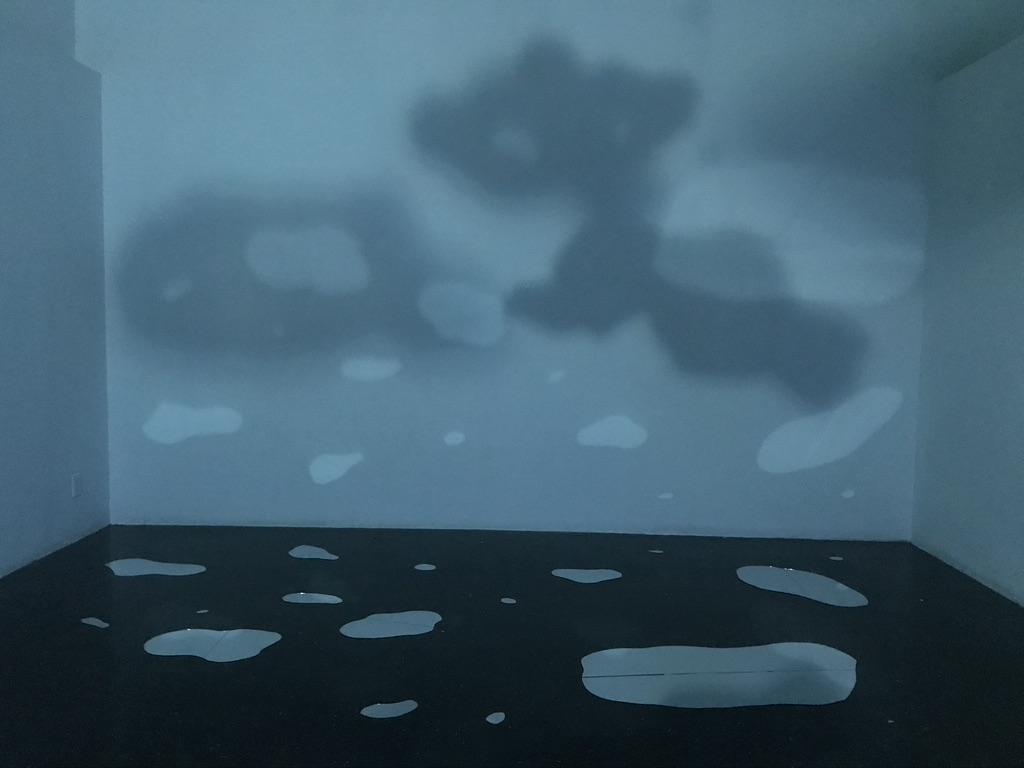



“And of course she had studied the civilization that had immediately preceded her own — the civilization that had mistaken the functions of the system, and had used it for bringing people to things, instead of for bringing things to peop
le… She shrank back into the room, and the wall closed up again.”
E.M. Forster, The Machine Stops, November 1909
What does it mean to plan your own obsolescence?
OBSOLESCENE refers to the planned obsolescence of technology, including plastics, and the obsolescence humans will soon face as a result of that same technology. Obsolescence:the process of becoming obsolete or outdated and no longer used. The suffix “-cene” refers to geologic time, a combining form meaning “new,” “recent,” used as the final element of a compound word, as in, Pleistocene. I see synthetic material as a portrait of our severance from nature. Humans have become an invasive species, bringing with us “disposable” never-decomposing materials we refuse to halt making in the name of comfort and convenience. I implicate myself as a part of this in using only waste generated by my own life and lifestyle.
As antitheses of organic matter, the materials I use can only exist because humans engineered them. Will we create simulations of the natural experiences of days past, using artificial means?

STYROCUMULUS // Collegiate School
November 2021-February 2022



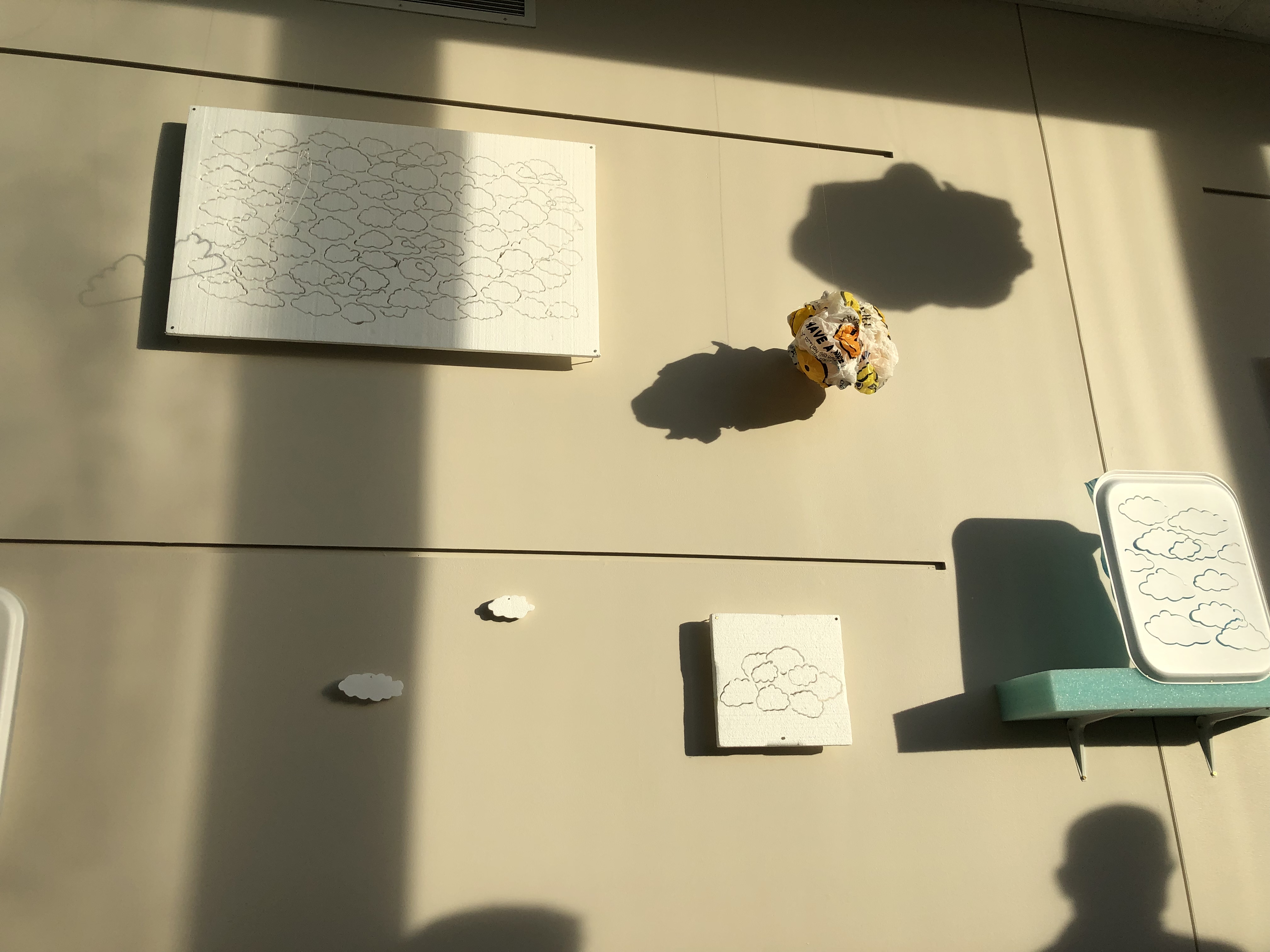
Utilizing post-consumer synthetic waste as material, Styrocumulus is a space to envision possible experiences of the future, to have conversations, and to collectively imagine new answers. The materials used in this installation are byproducts of my career teaching and working with glass as an art form. I see synthetic material is a portrait of our severance from nature. We have become an invasive species, bringing with us “disposable,” never-decomposing materials we refuse to halt making in the name of comfort and convenience. I implicate myself as a part of this in using only waste generated by my own life and lifestyle. As a non-material, a non-thing, a thing that can only be told what to be; plastics and styrofoam can only exist because we made it. I imagine things that will exist after humans- if we are slowly becoming made of plastic, what will the hybrid plastic organisms of the future be? Will we create simulations of the natural experiences of days past, using artificial means? I encourage the viewer to spend some time “cloudwatching” in this space, spending time with these ideas.
CLOUDWATCHING:
A Space for Radical Reimagining
// Sierra Nevada University
August 2021


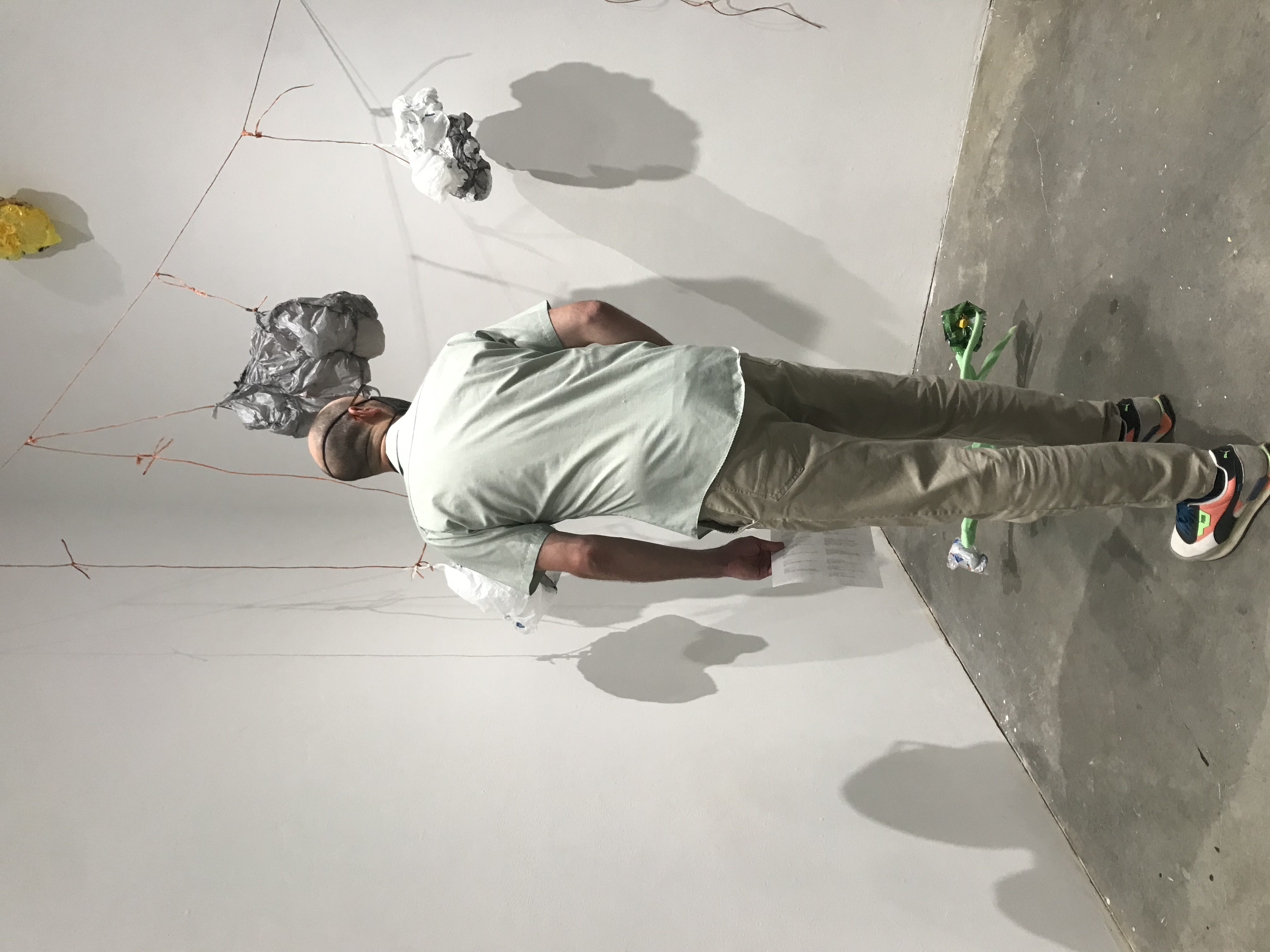
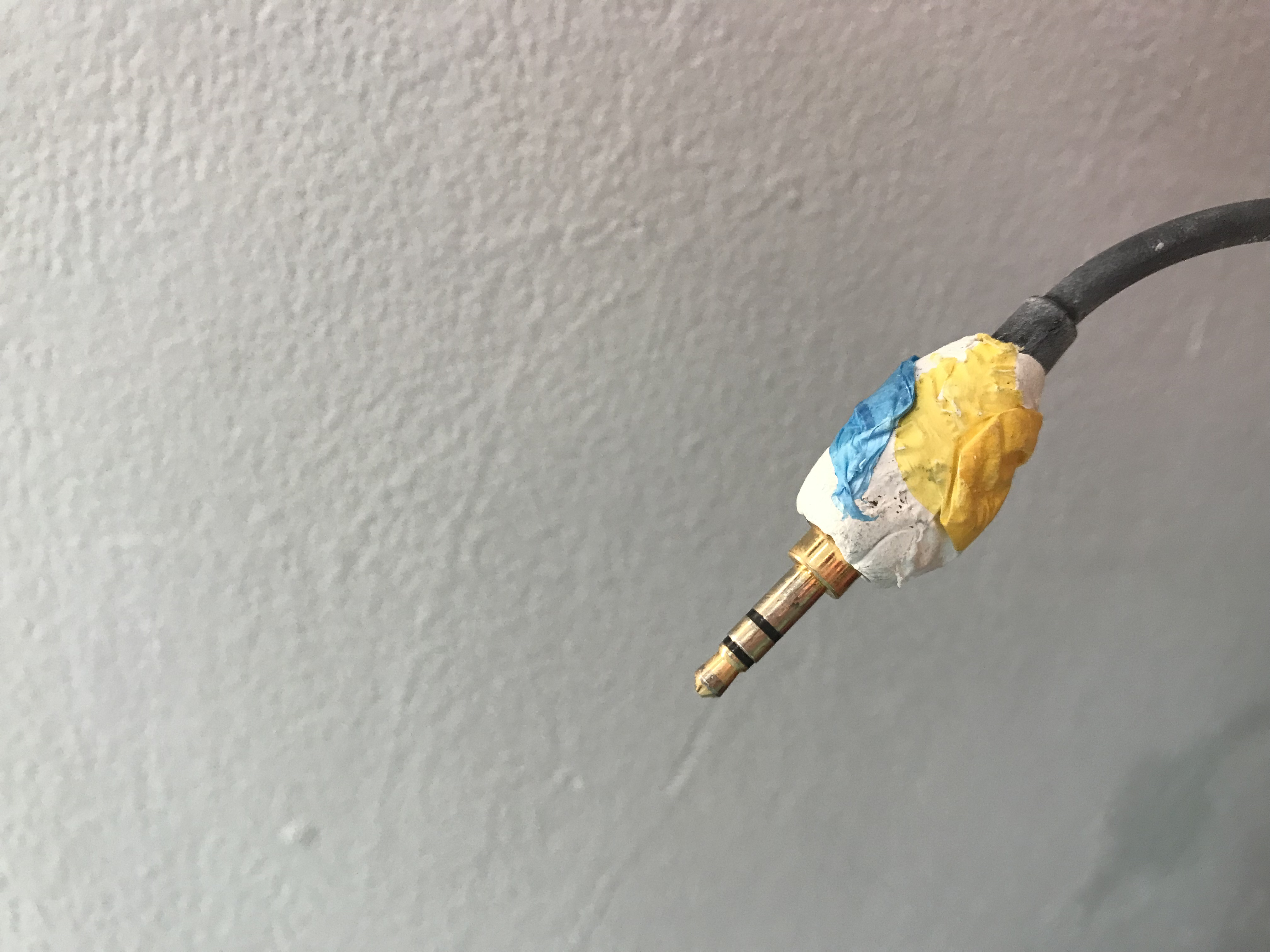


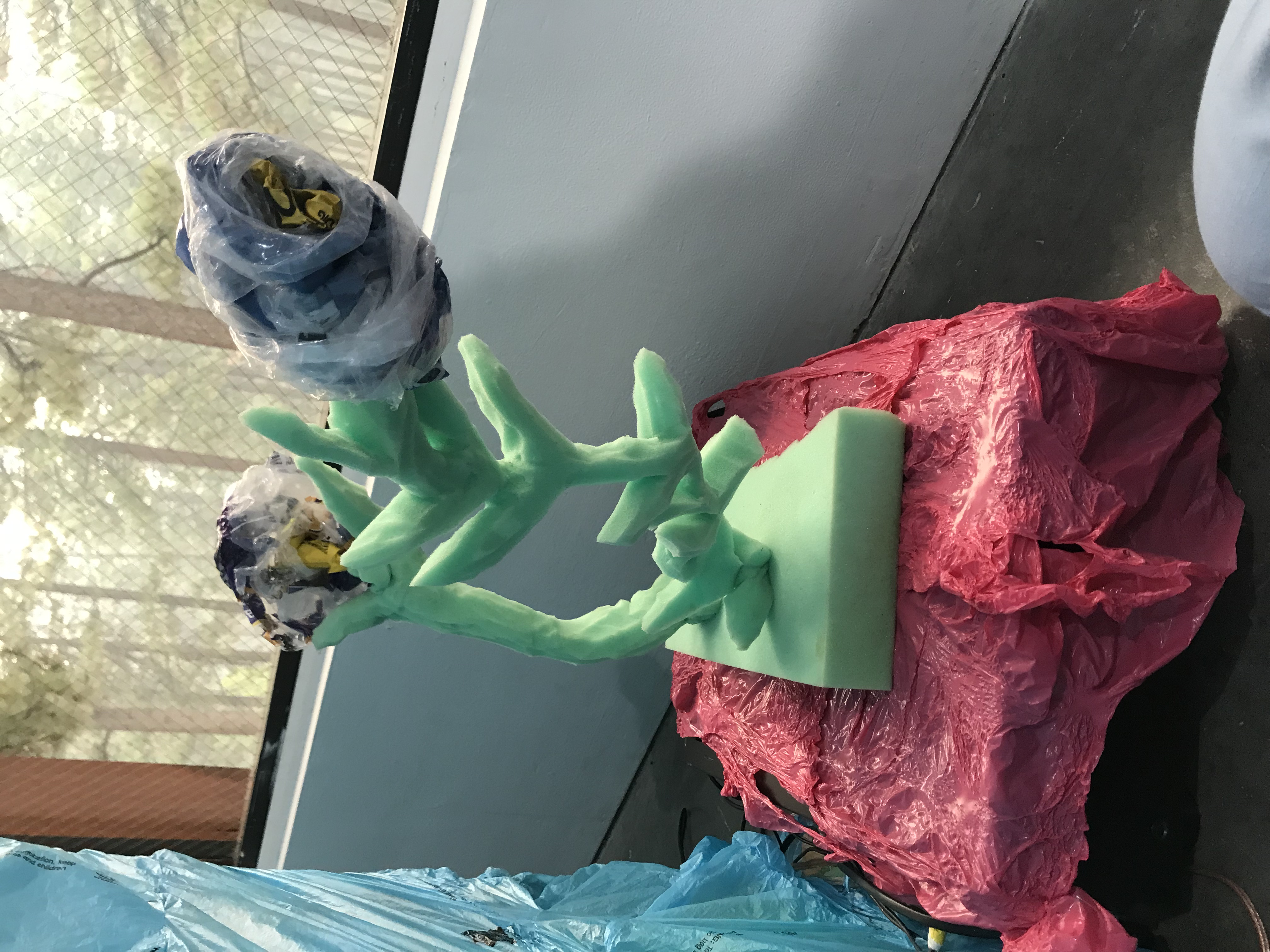
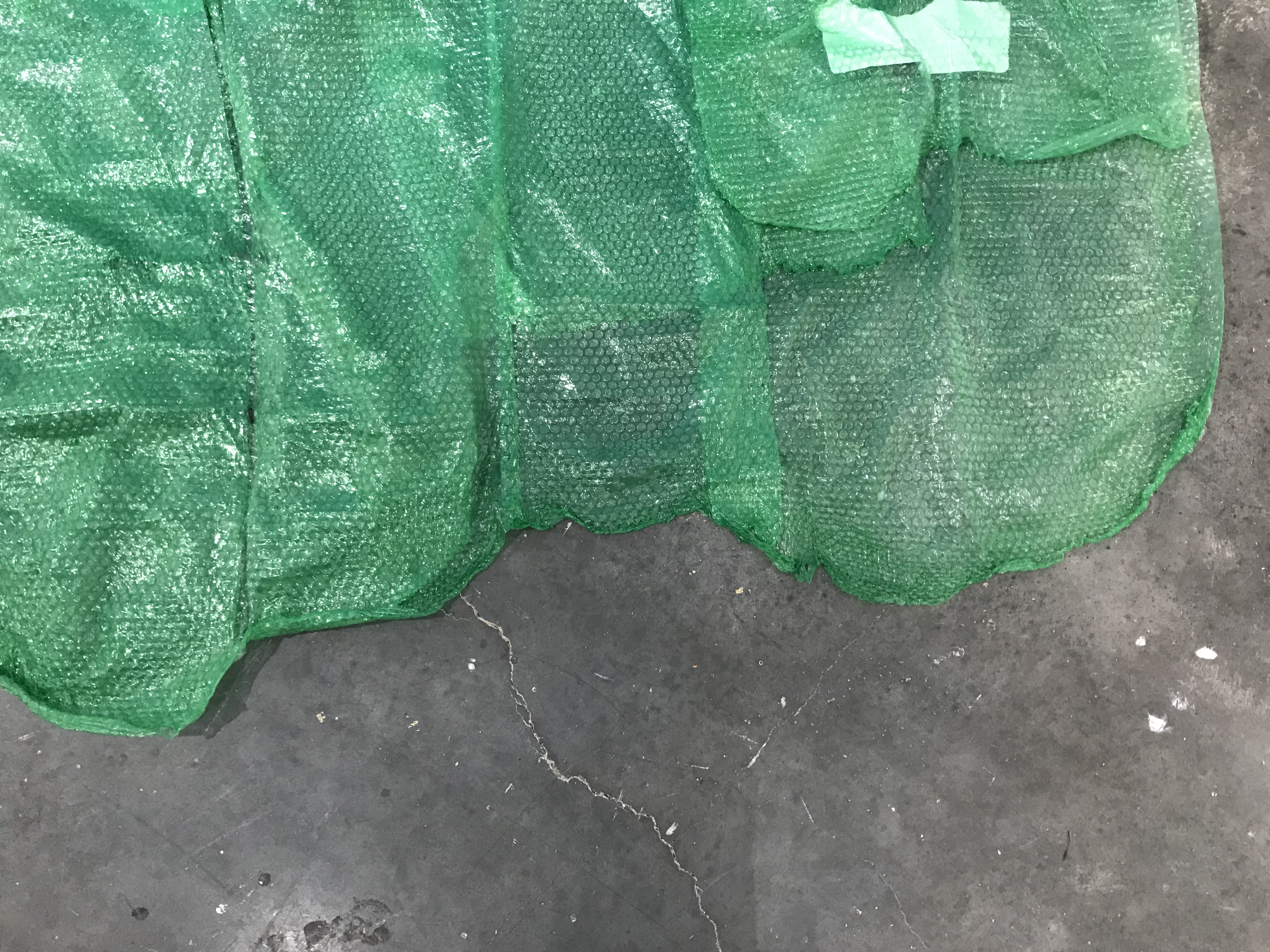
I am able to exist because of synthetic barriers. My experience is one in which plastic/oil based synthetics are integral; from birth they have sustained my existence. As a person with allergies to all natural fibers and proteins- trees, grasses, flowers, animals cause a reaction, often severe, in my skin and lungs. Without medications, which come in the form of plastic inhalers, plastic pill bottles, and metal and plastic sheets, I am not able to fight these reactions myself. All of the installation’s imitations of nature are “safe” for me- the opposite for the long-term sustainability of the things they mimic. My work investigates this imbalance necessary to my survival.
I understand my positioning as someone who simultaneously benefits from the existence of plastic, and someone who wishes it never was invented. It is inherent to my existence, and I to its. I find these concepts around plastic applicable to “hopeful nihilist” views of the future; combatting the knot of problems we are left to deal with as a result of the short-sightedness of white colonialist capitalism. I use a technique of melt-“quilting” technique to create large scale plastic “quilts” out of HDPE grocery bags; a reference to feedsack quilting, and the notion of quilts as building blocks of Americana. I am specifically queering the gendered (and not provable) tale of the log cabin quilt, wherein male family members build the log cabin, while female members make a log cabin quilt. This story participates in the sensationalized myth of toxic American manifest destiny.
Plastic being the great metaphor for capitalism, its lightweightness, cheapness, “durability,” hydrophobia and malleability outweighing the obvious needs of our planet; biodegradability, sustainability. Chemical additives are applied in the making of HDPE “to improve resistance to degradation by ozone, temperature, light, bacteria, humidity.” In making indestructible materials common, we have created a landfillocene. My use of disposable grocery bags highlights American waste addiction as another block in our foundation. Growing food, and food to feed animals we eat, accounts for 24% of global carbon emissions. I create the plastic sculptures quickly and without structured parts or plans, mimicking the systems which have allowed this material has come to be ubiquitous. The material is valuable to me for the same reasons it is valuable to capitalism- light, shippable, shrinkable. Commandable.
This piece engages electricity (another 25% of our carbon emissions) to play sound in the space. As the viewer moves through the space, the sound of their interaction with the plastics completes a soundscape. This sound consists of recordings of styrofoam and other synthetic materials and a wave noise machine. It is an imagining of a post-human future in which only the most adapted animals survive- bugs and birds that have absorbed our waste and microwaste, and “adapted” to a hotter Earth.
This installation is inspired by the format of a child’s early landscape drawing: a sun in the top corner, a blue sky, clouds, and flowers. I also teach art at various retirement homes, where a similar style of illustration occurs later in life, too. I find our cartesian impulse towards understanding and experiencing nature is reflected in this phenomenon of simplifying landscape.

